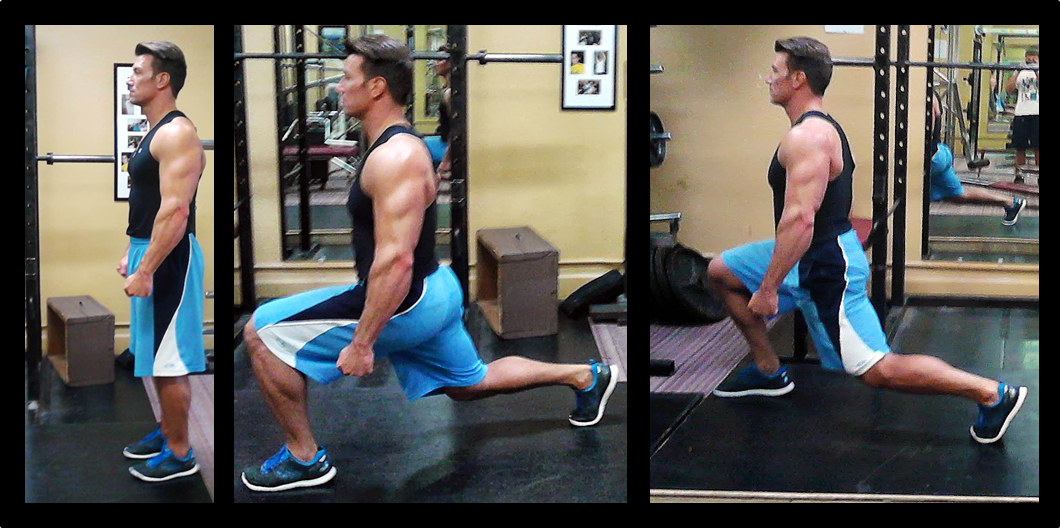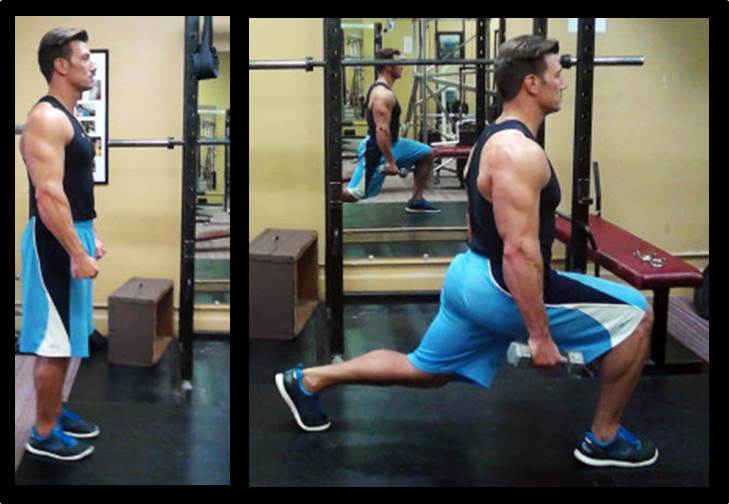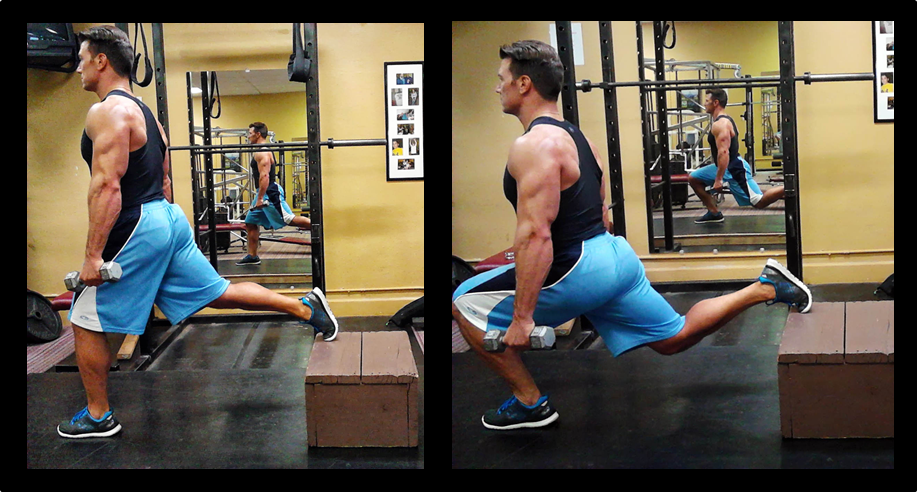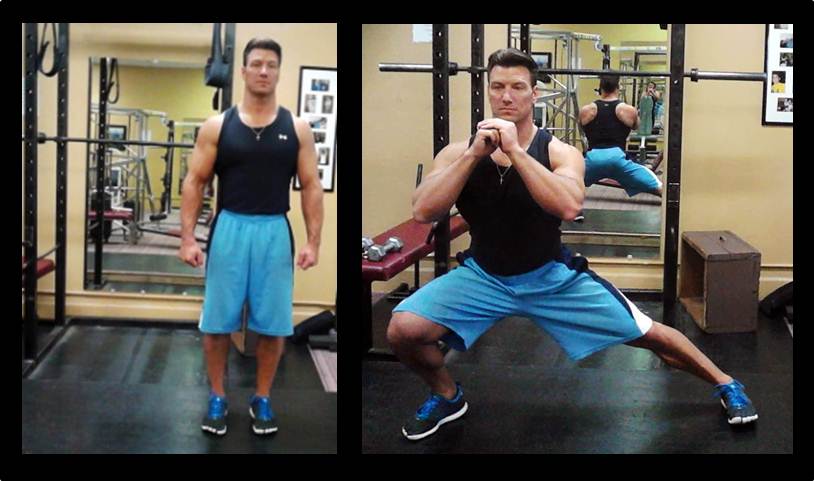The Lunge

The history of the lunge can be dated back to the eighteenth century, during the fencing era, or even further back to martial arts training in Asia. Many martial arts forms incorporate the lunge in their movements, especially power moves. As for myself, I learned the lunge from one of the greatest coaches ever at my local high school. I remember many mornings waking up and not being able to walk up or down my stairs due to complete soreness. What I didn't realize at the time was that soreness was testimony to what the lunge can do. I believe there is no other exercise that can work more muscles in one simple movement.
If performed correctly, you can feel it in your glutes, hamstrings, calves and especially the quads, all with no pain in the lower back or the knees. Also, there are many variations to the lunge (side, walking, standing, reverse, smith-machine, ball lunge/squat).
For the standing lunge, you start standing with your feet together then step forward as far as you can, keeping your back straight vertically and bending your knee into a right angle, then with explosion push with your quads back to standing position.
For those that want to walk it out, there are two variations. Most people, when doing walking lunges, will step long, then stand up and repeat many times. This is more like a step-up, and is best for beginners. For the more advanced, each step should be pulled through, keeping your head at the same level from start to finish. The beginner version of this looks like peaks and valleys, and the advanced looks like a flat line.
If you find the walking lunge to be easy, you can step it up by adding resistance or weights, such as a barbell on your back, dumbbells at your sides or old water or milk jugs weighing about 8lbs. For lunges, I prefer the BowFlex SelectTech 1090 Dumbbells because they are easy to use and allow me to quickly adjust weight for quick sets.
One additional variation, which most people will call a squat but I believe to be a lunge, is to place your back leg on an exercise ball and lunge out or squat down. You can do this one leg at a time or alternate.
There are a few things to remember when doing lunges to avoid injury. You should always stretch before and after lunges because this is a high intensity exercise. Stretch your quads, hams and calves and get at least five minutes of a pre-warm-up (jogging, walking, jump rope, leg extension, hamstring curls) to get the blood flowing and muscles loose. And make sure you keep your back straight and the knee in a 90 degree angle to prevent any injuries to the back or knees.
Here's a quick cheat sheet on the different types of lunges you can try at home:
Walking Lunge: Using a large area, begin the lunge by stepping forward as far as you can. Instead of standing up, pull the other leg through. Be sure to keep your head level.

Standing Lunge: Start with feet together. Step out as far as you can, then explode back to starting position. Alternate legs.

Reverse Lunge: This is the same as a walking lunge, but performed in reverse.

Split Lunge/Squat: Starting in a lunge position, use a jumping motion in one place to switch legs.
Side Lunge: Instead of stepping out in front, step as far as you can to the side. Keep your back as straight as possible.

